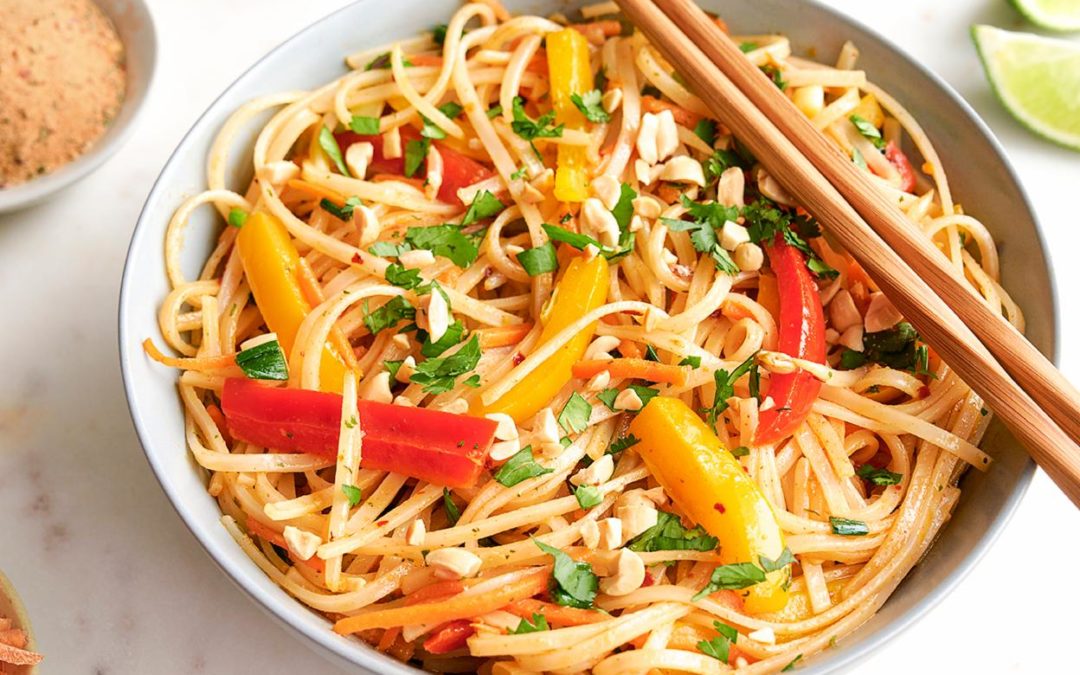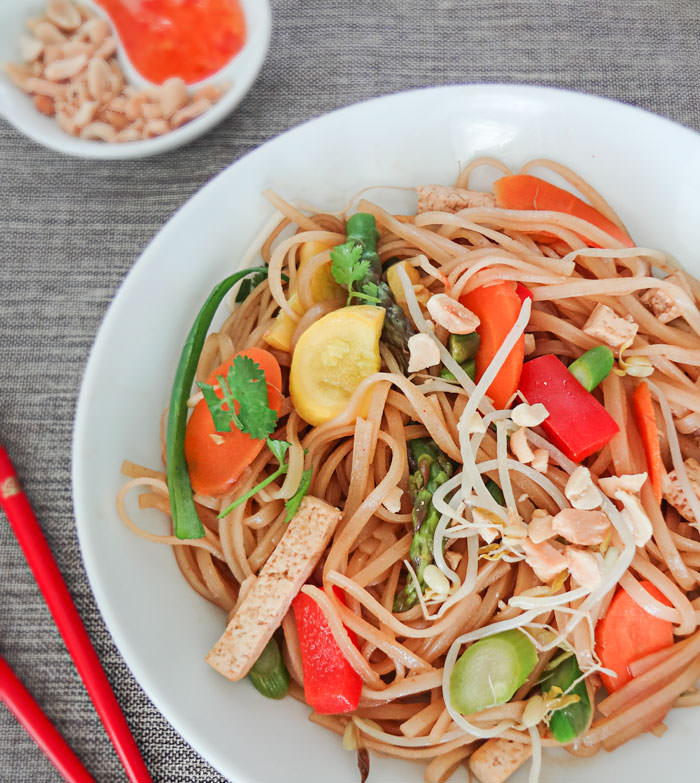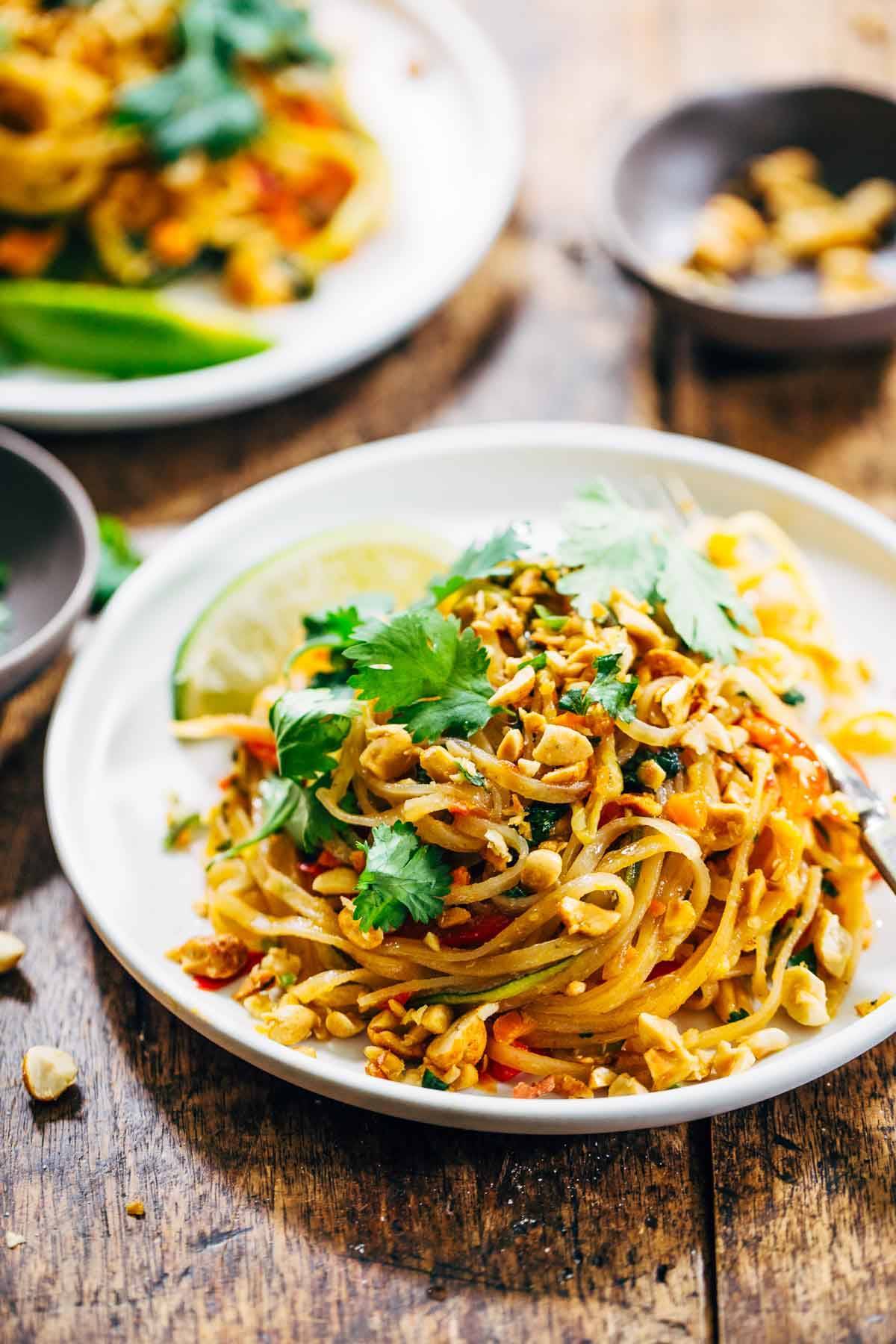Veggie Pad Thai: A Symphony of Flavors and Textures

Pad Thai, Thailand’s national dish, is a beloved culinary icon known for its tantalizing blend of sweet, sour, salty, and spicy flavors. Traditionally featuring protein like chicken, shrimp, or tofu, the dish’s versatility shines through in its adaptable nature. Veggie Pad Thai, a vibrant and flavorful vegetarian adaptation, allows for a delightful exploration of textures and tastes, showcasing the bounty of fresh vegetables while retaining the essence of the classic dish. This article delves into the heart of Veggie Pad Thai, exploring its history, variations, ingredients, cooking techniques, and the cultural significance it holds.
A Delicious History with a Modern Twist:
The origins of Pad Thai are shrouded in some debate, with claims ranging from its creation during World War II as a way to promote national identity to its evolution from earlier noodle dishes. Regardless of its precise beginnings, Pad Thai’s enduring popularity speaks to its deliciousness and adaptability. The vegetarian version, a relatively recent development driven by the growing popularity of vegetarian and vegan diets globally, maintains the core elements of the dish while offering a healthier and more plant-based alternative. This evolution demonstrates the dynamism of culinary traditions, showcasing how classic dishes can be reimagined to cater to changing tastes and dietary preferences.
The Star Ingredients: A Colorful Cast:
Veggie Pad Thai boasts a vibrant array of ingredients, each contributing to its unique flavor profile and textural complexity. The foundation lies in the rice noodles, which absorb the flavorful sauce beautifully. The choice of noodles is crucial; wide, flat rice noodles, known as sen yai, are traditionally preferred for their ability to hold the sauce and other ingredients. However, other types of rice noodles, such as sen mee (thin rice noodles), can also be used, resulting in a slightly different textural experience.
Beyond the noodles, the vegetables form the heart of the dish. The classic combination often includes:
- Bean Sprouts: These add a crisp, slightly sweet crunch that contrasts beautifully with the softer noodles and other ingredients.
- Carrots: Shredded carrots contribute a touch of sweetness and a pleasing orange hue to the dish.
- Green Onions: These provide a fresh, slightly oniony flavor and a vibrant green color.
- Tofu: While not strictly a vegetable, tofu is a common addition to vegetarian Pad Thai, offering a protein source and a soft, absorbent texture that soaks up the flavorful sauce. Firm or extra-firm tofu works best to avoid a mushy texture.
- Broccoli: Adds a slightly bitter counterpoint to the sweetness of other ingredients.
- Mushrooms: Shiitake, oyster, or cremini mushrooms offer an earthy, umami flavor that enhances the overall taste profile.
- Peppers: Bell peppers (red, yellow, or orange) add sweetness and vibrant color, while chili peppers bring the heat.
- Snow peas: These tender peas contribute a delicate sweetness and a pleasing crunch.


The versatility of Veggie Pad Thai lies in its adaptability to seasonal vegetables. Feel free to experiment with other vegetables like zucchini, bok choy, asparagus, or even edamame, adjusting the cooking time as needed to maintain optimal texture.
The Sauce: The Heart of the Matter:
The sauce is the soul of Pad Thai, binding all the ingredients together in a harmonious blend of flavors. A well-balanced Pad Thai sauce achieves the perfect equilibrium of sweet, sour, salty, and spicy notes. The key components usually include:
- Fish Sauce (or Vegetarian Alternative): Traditionally, fish sauce provides umami depth and saltiness. For vegetarian versions, soy sauce, tamari (gluten-free soy sauce), or a combination of both can be used, along with a splash of mushroom broth for added umami.
- Tamarind Paste: This provides the characteristic sourness, balancing the sweetness and saltiness of the other ingredients.
- Palm Sugar (or Brown Sugar): This contributes a rich, caramel-like sweetness. Brown sugar can be used as a substitute, but palm sugar offers a more authentic flavor.
- Rice Vinegar: Adds a subtle sharpness that complements the other flavors.
- Chili Garlic Sauce (or Fresh Chilies): This provides the spicy kick. Adjust the amount according to your preference. Fresh chilies can be used for a more nuanced heat.
- Garlic and Ginger: These aromatics add a pungent depth to the sauce.

The precise ratios of these ingredients can be adjusted to your liking, creating a personalized sauce that perfectly suits your taste buds.
Cooking Techniques: Mastering the Art of Pad Thai:
The preparation of Veggie Pad Thai involves several key steps:
- Preparing the Noodles: Soak the rice noodles in warm water until softened, according to package instructions. This prevents them from becoming gummy when cooked.
- Stir-frying the Vegetables: Stir-fry the vegetables in a wok or large skillet over medium-high heat, ensuring they retain a slight crispness. Add the tofu towards the end of the stir-fry process.
- Making the Sauce: Whisk together all the sauce ingredients in a small bowl.
- Combining the Ingredients: Add the cooked noodles to the wok, followed by the stir-fried vegetables and tofu. Pour the sauce over the noodles and vegetables, tossing everything together until the noodles are well coated and heated through.
- Garnishing and Serving: Garnish with chopped peanuts, cilantro, lime wedges, and crushed red pepper flakes. Serve immediately.
Variations and Adaptations:
The beauty of Veggie Pad Thai lies in its adaptability. Feel free to experiment with different vegetables, sauces, and toppings to create your own unique version. Some variations include:
- Peanut-free Pad Thai: Omit the peanuts and use sunflower seeds or sesame seeds instead.
- Spicy Pad Thai: Increase the amount of chili garlic sauce or add fresh chilies for a spicier kick.
- Vegan Pad Thai: Ensure all ingredients, including the sauce, are vegan-friendly.
- Gluten-free Pad Thai: Use tamari instead of soy sauce and ensure the noodles are gluten-free.
Cultural Significance:
Pad Thai transcends its status as a mere dish; it’s a symbol of Thai national identity and a testament to the country’s rich culinary heritage. Its presence in street food stalls, upscale restaurants, and home kitchens alike highlights its widespread appeal and cultural significance. The vegetarian adaptation further demonstrates the evolving nature of culinary traditions, showcasing how classic dishes can be reinterpreted to cater to diverse dietary needs and preferences.
Conclusion:
Veggie Pad Thai is more than just a vegetarian alternative to a classic dish; it’s a vibrant and flavorful culinary experience in its own right. Its adaptability, the colorful array of vegetables, and the perfectly balanced sauce make it a satisfying and delicious meal for vegetarians and non-vegetarians alike. By exploring the nuances of its ingredients, mastering the cooking techniques, and experimenting with variations, you can embark on a culinary journey that celebrates the deliciousness and versatility of this beloved Thai dish. So, gather your ingredients, embrace the vibrant flavors, and savor the delightful symphony of textures and tastes that Veggie Pad Thai has to offer.

Video tentang Veggie Pad Thai: A Symphony of Flavors and Textures
Penutup
Therefore, we hope this article has provided valuable insights on Veggie Pad Thai: A Symphony of Flavors and Textures. We appreciate your attention to our article . See you in our next article!

